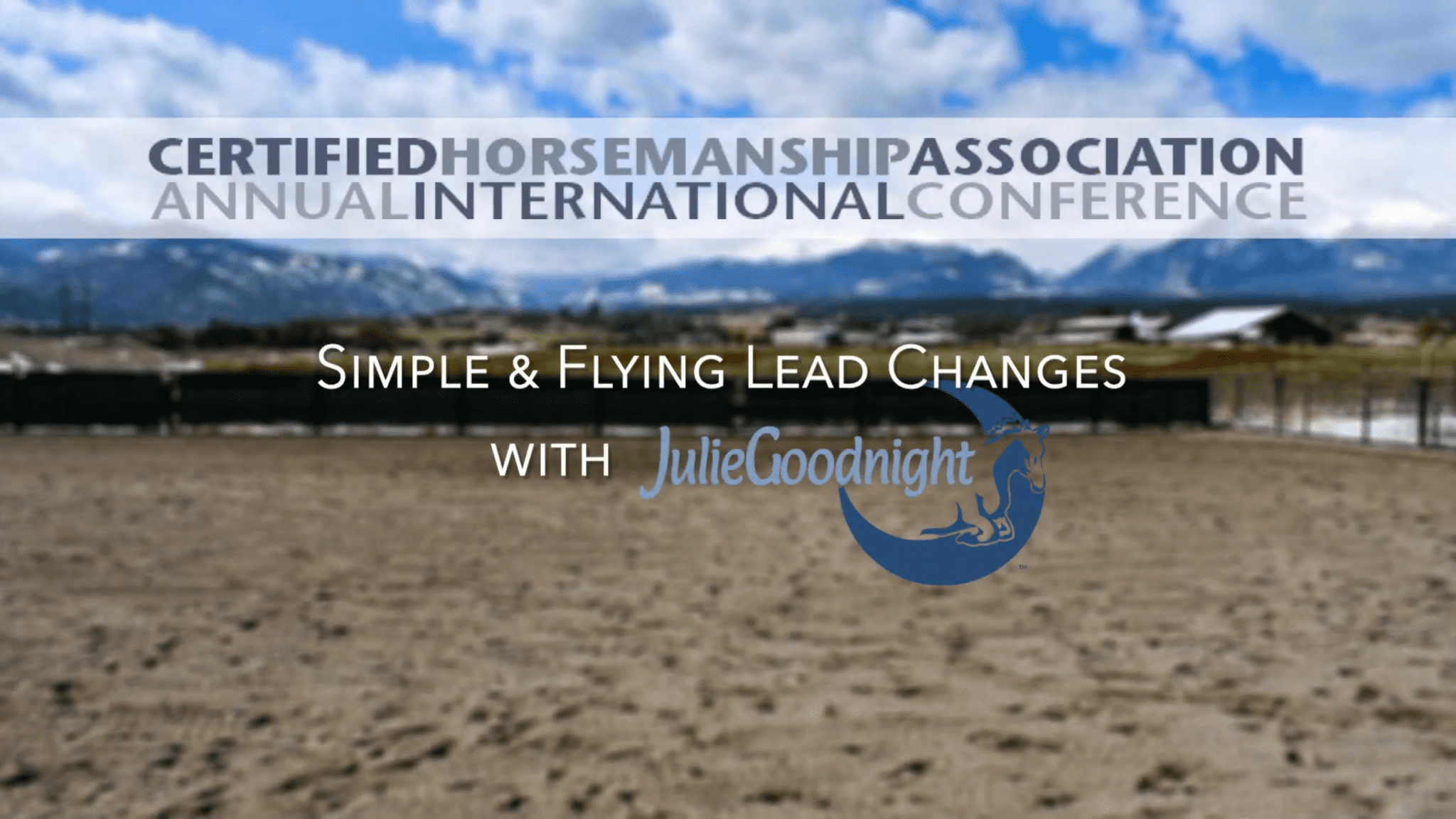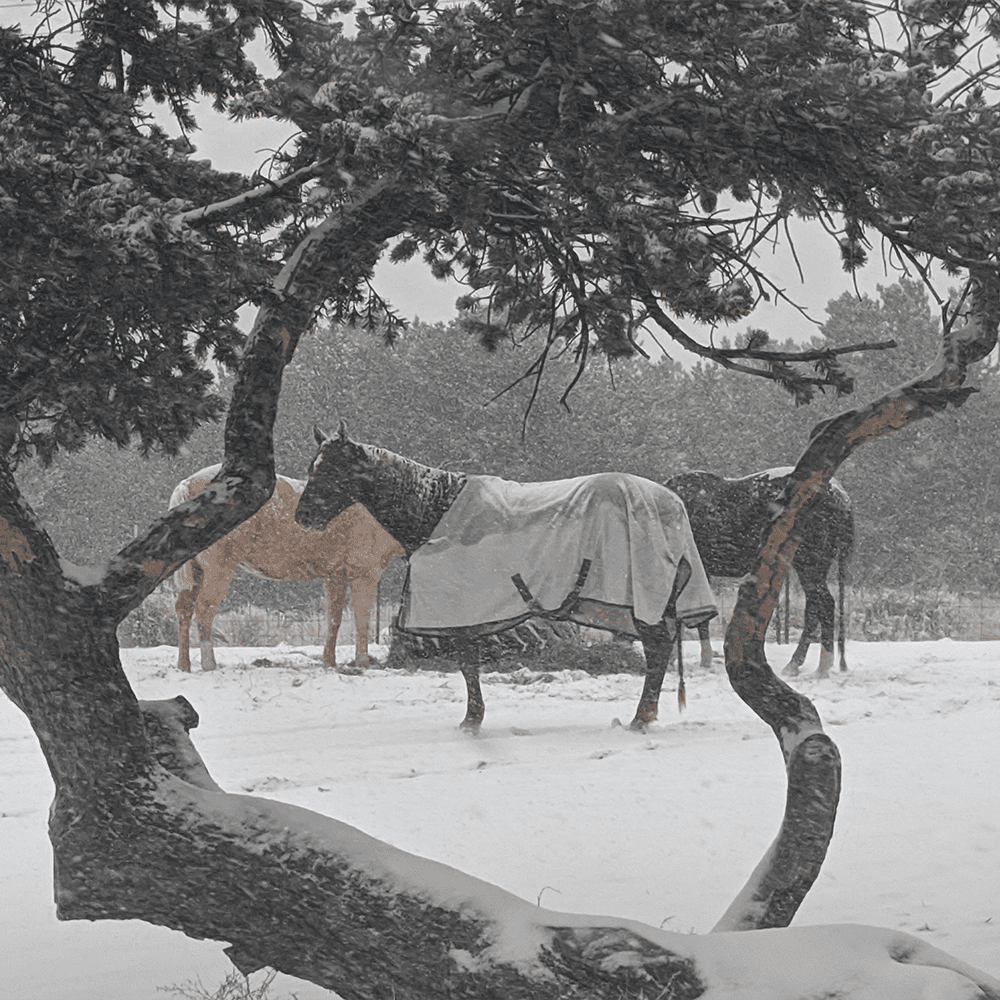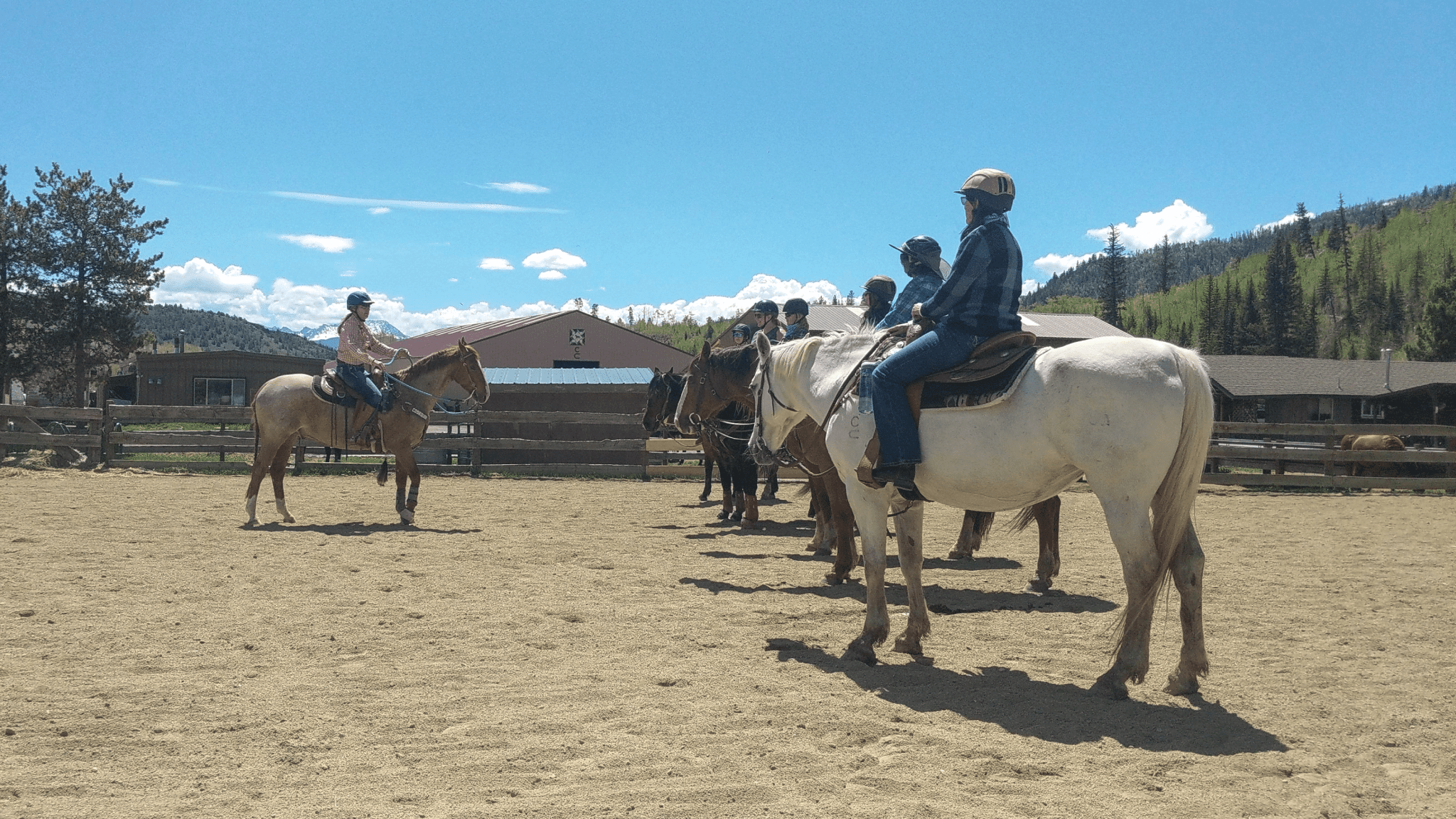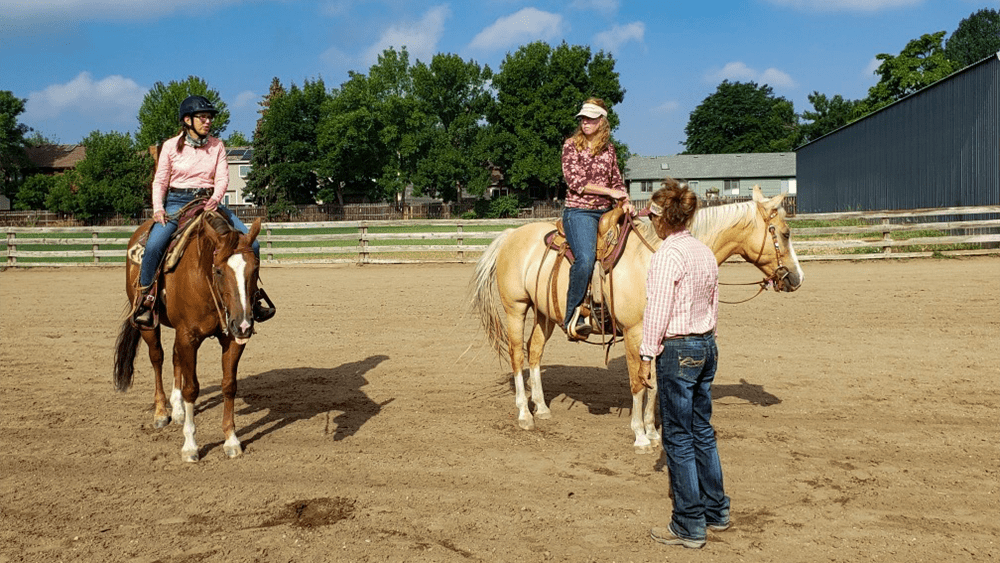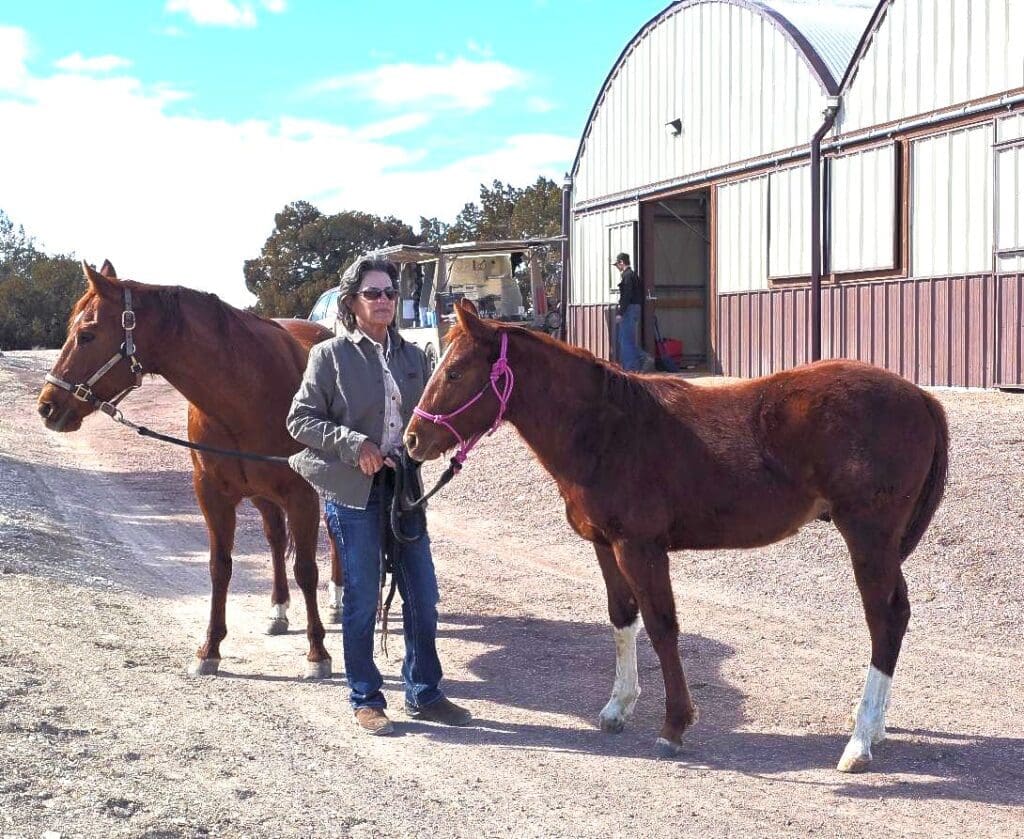
Rip’s first farrier appointment
This month’s report focuses on Rip, a rambunctious yearling stud colt, born here at my ranch last spring, and the darling of our small herd of five. As a healthy young colt, Rip exhibits many natural, instinctive behaviors, including biting, striking, kicking, running, whirling or “flight,” and mounting other horses. A primary focus of our training this month has been to begin instilling the important “no fraternization” rule to ensure safety and good manners when Rip is around other horses being handled by humans.
Natural Colt Behaviors: Rip, being a yearling stud colt, naturally engages in “sparring” or play fighting, which is a common behavior in male horses to develop their life-skills. His interactions within the herd provide valuable insights into his developing social skills. His mother, Annie, is beginning to show intolerance towards his exuberance, but instead of scolding him, she dodges him. Uncle Abner tends to tolerate more of his rude behavior than he should, while Uncle Tom is quick to respond and “gives it right back”. This has already led to Rip playing more cautiously and showing more deference towards Tom. However, Rip still acts with “reckless abandon” around Abner.
The Necessity of the “No Fraternization” Rule: The need to teach Rip a crucial rule became evident during our attempts to catch adult horses in the pen with Rip. He had a tendency to run towards us at full speed, wanting to spar even as we were haltering another horse. Furthermore, leading Rip and Annie together often became challenging when Rip would decide to jump on her back and bite her neck.
As the saying goes, “There’s no education in the second kick of a mule.” All the better if you can avoid the first kick. Recognizing the potential for injury, we knew it was time to teach Rip one of the most important rules for a horse to learn.
Defining and Implementing the Rule: This critical rule, essential for both human and horse safety, is as follows: When in the presence of humans, when being haltered, led, tied, or ridden, thou shalt not interact with, fraternize with, or make any displays of herd behavior or aggression toward another horse. While this goes against their instincts, horses are excellent at learning and abiding by this rule. We have begun teaching Rip this standard of behavior by consistently reinforcing it. Initially, it only took a few scoldings before he started containing his coltish impulses.
Progress and Reinforcement: By now, just a simple “hiss and spit” or a flick of the flag is typically all the reinforcement needed to remind him of his manners. It is crucial that everyone who handles Rip or any of the horses in the paddock is aware of Rip’s training and handles him in a consistent manner. This consistency is key to ensuring that the no-fraternization rule becomes ingrained in his behavior.
Summary/Looking Ahead:
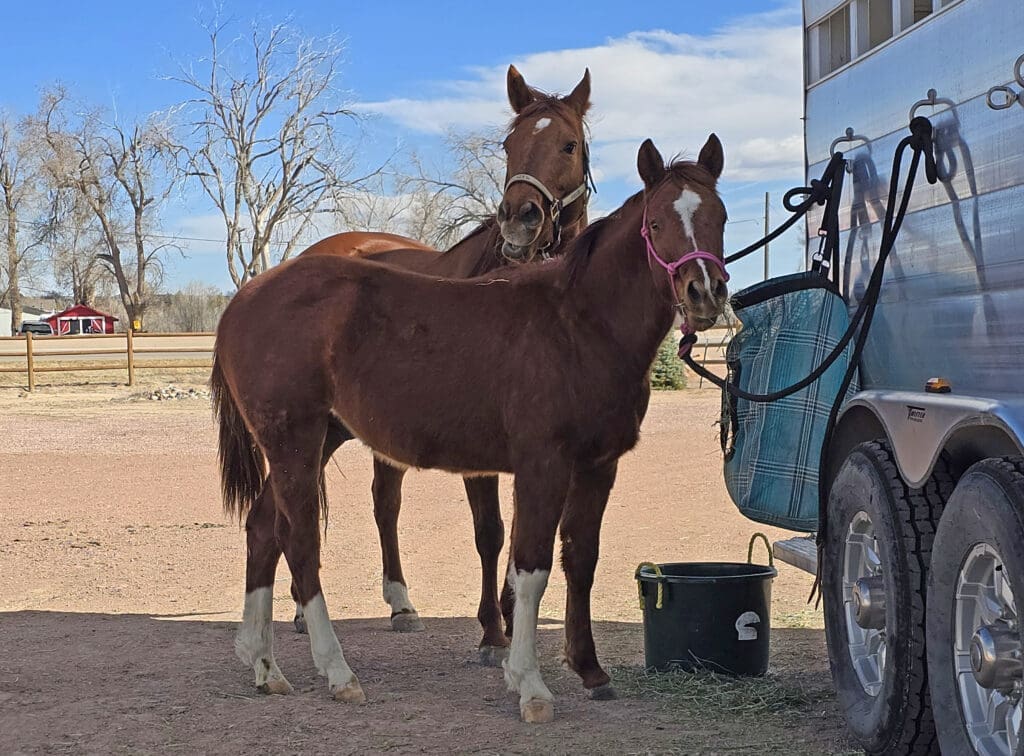
Rip standing patiently at the trailer with Annie
Despite his naturally rambunctious and instinctive behaviors, Rip is already demonstrating an ability to learn and control his impulses regarding interactions with other horses when humans are present.
The consistent application of the “no fraternization” rule by all handlers is vital for Rip’s development and for the safety of those around him.
Teaching this fundamental rule early and reinforcing it consistently will be a significant benefit to Rip throughout his life, making him safe, reliable, and pleasant to be around. These basic handling skills are the very foundation for his future success. We will continue to cultivate this and other essential ground manners as Rip matures.
